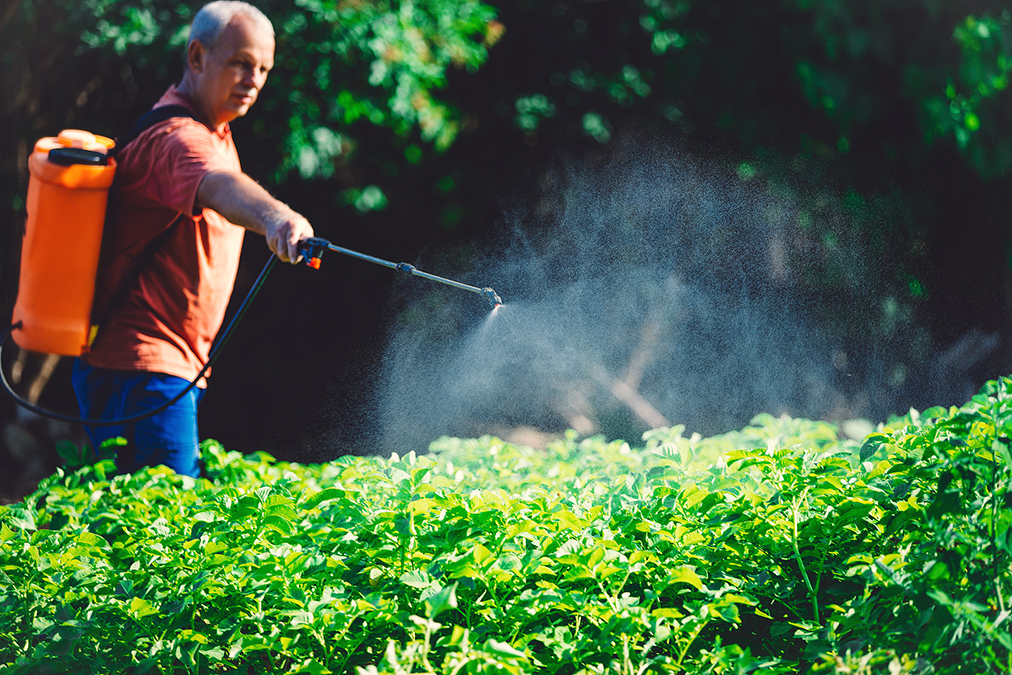 Parkinson’s disease has traditionally been blamed on genetics, with little hope of preventing or curing it.
Parkinson’s disease has traditionally been blamed on genetics, with little hope of preventing or curing it.
But a recent study in the International Journal of Environmental Research and Public Health reveals an environmental cause, one that can increase the risk of developing Parkinson’s more than tenfold. But at the same time, it’s completely avoidable.
The researchers obtained records of people who were hospitalized with Parkinson’s disease in 95 different hospitals from the Louisiana Office of Public Health. These diagnoses were made between 1999 and 2012, with more recent data unavailable.
They then obtained the ZIP Codes of 23,224 of these patients so they could calculate the occurrence of Parkinson’s disease per 10,000 residents.
The researchers compared these Parkinson’s statistics with maps of local agricultural activities and water quality samples taken by the Louisiana Department of Health and Hospitals.
They also received estimates from the US Geological Survey of herbicide and insecticide use on farmland and timberland in Louisiana between 1992 and 2004, with the estimates based on the farmers’ record keeping.
While the average occurrence of Parkinson’s was approximately 2.9 out of every 10,000 people, those areas in which certain herbicides and insecticides were used featured 35–46 people out of every 10,000-receiving treatment for Parkinson’s.
The highest rates appeared to be in areas dominated by forestry, woodlands, and grass pastures.
To be precise, the worst insecticides seemed to be 2,4-dichlorophenoxyacetic acid (2,4-D) and paraquat, and the worst herbicide was chlorpyrifos.
The scientists found the highest occurrence of Parkinson’s in areas where aquifers were refilled via rain water that seeped into them through chemically treated farmland or where small streams delivered chemical-containing water to the aquifers.
Accordingly, they discovered that some of the highest Parkinson’s rates appeared in areas where tap water was taken from these recharged aquifers.
This means that we do not have to live or work on a farm to come into contact with these harmful herbicides and insecticides; they can seep into the water supplies of cities and suburbs as well.
It also serves as another reminder to use good water filter devices in our homes, preferably multi-stage reverse osmosis devices with new filters.
It also reminds us to wash fruit and vegetables thoroughly before we eat them.

 Overcoming IBD
Overcoming IBD Multiple Sclerosis
Multiple Sclerosis Banishing Bronchitis
Banishing Bronchitis Gum Disease Gone
Gum Disease Gone Overcoming Onychomycosis
Overcoming Onychomycosis Neuropathy No More
Neuropathy No More The Prostate Protocol
The Prostate Protocol Brain Booster
Brain Booster
 Ironbound
Ironbound
 Solution for Shingles
Solution for Shingles
 The Bone Density Solution
The Bone Density Solution
 The Ultimate Healing Protocol
The Ultimate Healing Protocol
 The Parkinson's Protocol
The Parkinson's Protocol
 The Chronic Kidney Disease Solution
The Chronic Kidney Disease Solution
 Overthrowing Anxiety
Overthrowing Anxiety The Fatty Liver Solution
The Fatty Liver Solution The Hypothyroidism Solution
The Hypothyroidism Solution
 The End of Gout
The End of Gout The Blood Pressure Program
The Blood Pressure Program
 The Oxigized Cholesterol Strategy
The Oxigized Cholesterol Strategy
 Stop Snoring And Sleep Apnea Program
Stop Snoring And Sleep Apnea Program
 The Arthritis Strategy
The Arthritis Strategy The Vertigo & Dizziness Program
The Vertigo & Dizziness Program The 3-Step Diabetes Strategy
The 3-Step Diabetes Strategy Hemorrhoids Healing Protocol
Hemorrhoids Healing Protocol The Erectile Dysfunction Master
The Erectile Dysfunction Master Weight Loss Breeze
Weight Loss Breeze The IBS Program
The IBS Program The Insomnia Program
The Insomnia Program The Migraine and Headache Program
The Migraine and Headache Program The Neck Pain Solution
The Neck Pain Solution The Menopause Solution
The Menopause Solution The Ejaculation Master
The Ejaculation Master The TMJ Solution
The TMJ Solution The Acid Reflux Solution
The Acid Reflux Solution The Fibromyalgia Solution
The Fibromyalgia Solution The Psoriasis Strategy
The Psoriasis Strategy